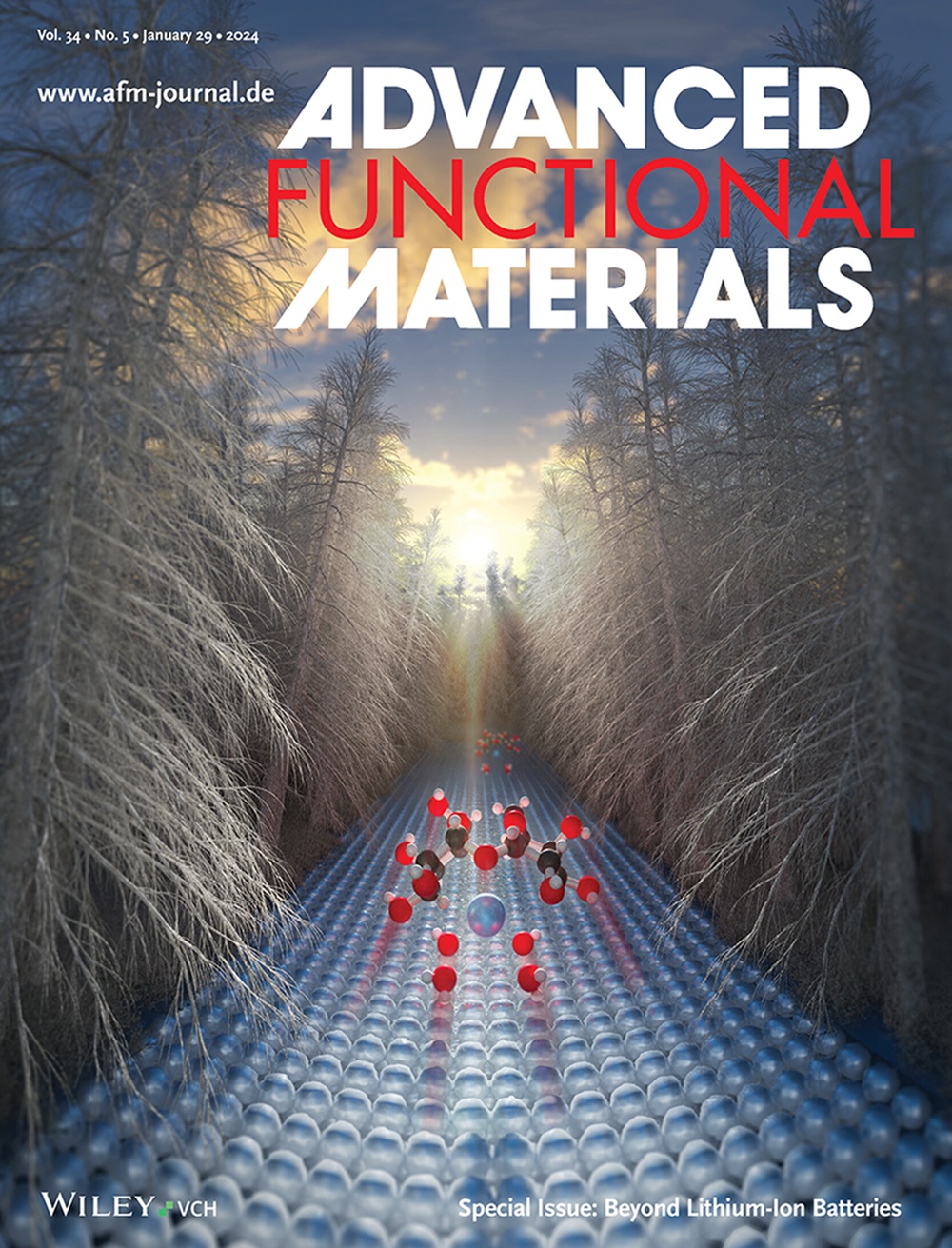A Local-Dissociation Solid-State Polymer Electrolyte with Enhanced Li+ Transport for High-Performance Dual-Band Electrochromic Smart Windows
IF 18.5
1区 材料科学
Q1 CHEMISTRY, MULTIDISCIPLINARY
引用次数: 0
Abstract
Windows through heat exchange play a vital role in energy saving for realizing a net-zero carbon emission society. Dual-band electrochromic (EC) smart windows by dynamically regulate visible (VIS) and near-infrared (NIR) light are necessary for improving both building energy efficiency and habitant comfort. However, the rational design of high-performance electrochromic devices (ECDs) suffers sluggish EC response due to the slow ion transport. In this work, a locally dissociated Li+ concept is proposed to construct a solid-state polymer electrolyte (SPE) with ultrafast Li+ transport. The succinonitrile (SN) is employed to loosen the Li+-anion pair and the crystallographic C─O chain in the poly(ethylene glycol) methyl ether methacrylate (PEGMA) electrolyte by its strong solvation capability. The as-prepared SPE shows a high ionic conductivity of 6.48 mS cm−1 at 30 °C and a high transmittance of >90%. The SPE-based EC smart windows exhibited a fast switching speed (3.0/3.2 s for coloration/bleaching), a high coloration efficiency (CE) of 373.8 cm2 C−1, and a high optical modulation in the full solar spectrum (85%, 70%, 43% at 673, 1200, and 1600 nm, respectively). Finally, the SPE-based EC smart windows shows three working modes with a temperature regulation range of 19.1 °C, exhibiting great potential in practical application.

一种增强Li+输运的局部解离固态聚合物电解质用于高性能双波段电致变色智能窗口
窗户通过热交换对实现净零碳排放社会的节能起到至关重要的作用。动态调节可见光和近红外光的双波段电致变色智能窗是提高建筑能效和居民舒适度的必要手段。然而,由于离子输运缓慢,高性能电致变色器件的合理设计存在电致变色响应缓慢的问题。在这项工作中,提出了局部解离Li+的概念,以构建具有超快Li+传输的固态聚合物电解质(SPE)。丁二腈(SN)利用其较强的溶剂化能力,使聚乙二醇甲基丙烯酸甲醚(PEGMA)电解质中的Li+阴离子对和结晶C─O链松动。制备的SPE在30℃时离子电导率为6.48 mS cm−1,透过率为90%。基于spe的EC智能窗口具有快速的切换速度(3.0/3.2 s的显色/漂白),高显色效率(CE)为373.8 cm2 C−1,并且在全太阳光谱中具有高光调制(分别在673,1200和1600 nm处为85%,70%和43%)。最后,基于spe的EC智能窗显示出三种工作模式,温度调节范围为19.1°C,具有很大的实际应用潜力。
本文章由计算机程序翻译,如有差异,请以英文原文为准。
求助全文
约1分钟内获得全文
求助全文
来源期刊

Advanced Functional Materials
工程技术-材料科学:综合
CiteScore
29.50
自引率
4.20%
发文量
2086
审稿时长
2.1 months
期刊介绍:
Firmly established as a top-tier materials science journal, Advanced Functional Materials reports breakthrough research in all aspects of materials science, including nanotechnology, chemistry, physics, and biology every week.
Advanced Functional Materials is known for its rapid and fair peer review, quality content, and high impact, making it the first choice of the international materials science community.
文献相关原料
公司名称
产品信息
阿拉丁
SN
阿拉丁
PEGMA
 求助内容:
求助内容: 应助结果提醒方式:
应助结果提醒方式:


